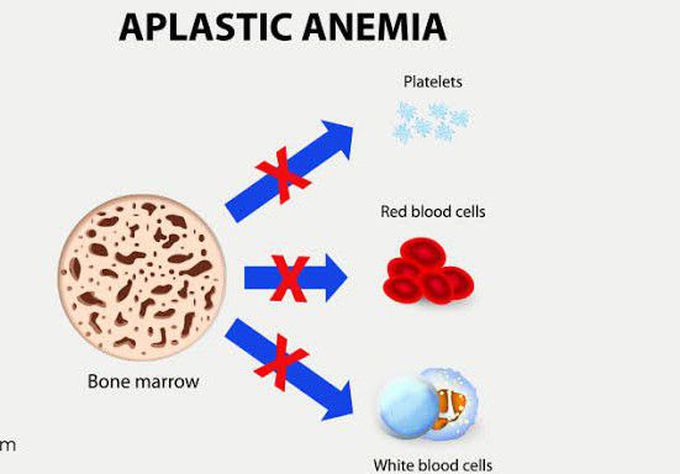


Aplastic Anemia and its causes
Aplastic anemia is a condition where the body fails to produce new blood cells. Aplastic anemia is a rare condition that can be found in people of any age. The symptoms of aplastic anemic include, fatigue, high rate of infections and uncontrolled bleeding. The common treatments for aplastic anemia include medications, blood transfusions and stem cell transplant. CAUSES When the bone marrow is damaged the production of new blood cells is halted. Bone marrow is present in the middle of the bones. It is a red colored spongy material that helps in the production of stem cells, which in-turn produce new blood cells (white blood cells, red blood cells and platelets). The diseased condition of bone marrow is described as aplastic (empty) and hypoplastic (very few blood cells). The bone marrow is injured or destroyed due to several factors like exposure to radiation, undergoing chemotherapy treatments, exposure to toxic chemicals, autoimmune disorders, viral infections (hepatitis, Epstein-Barr, cytomegalovirus, parvovirus B19 and HIV), and pregnancy.
Living with HIV was one of the hardest experiences of my life. The fatigue, the emotional toll, and the uncertainty about the future weighed on me every single day. I had tried many treatments and medications, but nothing seemed to restore my health or energy the way I hoped.Out of both hope and desperation, I came across NaturePath Herbal Clinic. At first, I was skeptical but something about their natural approach and the powerful stories I read gave me the courage to try one more time.I began their herbal treatment program, and within a few weeks, I noticed small but meaningful changes more energy, better sleep, and a stronger immune system. Over the months, those improvements only grew. Today, I can truly say my life has changed. I feel healthier, more balanced, and finally in control of my well-being again.This isn’t just a testimony it’s a heartfelt recommendation to anyone living with HIV or any chronic condition. Don’t give up hope. I’m so grateful I gave NaturePath Herbal Clinic a chance. Visit their website to learn more: www.naturepathherbalclinic.com Email: info@naturepathherbalclinic.com


